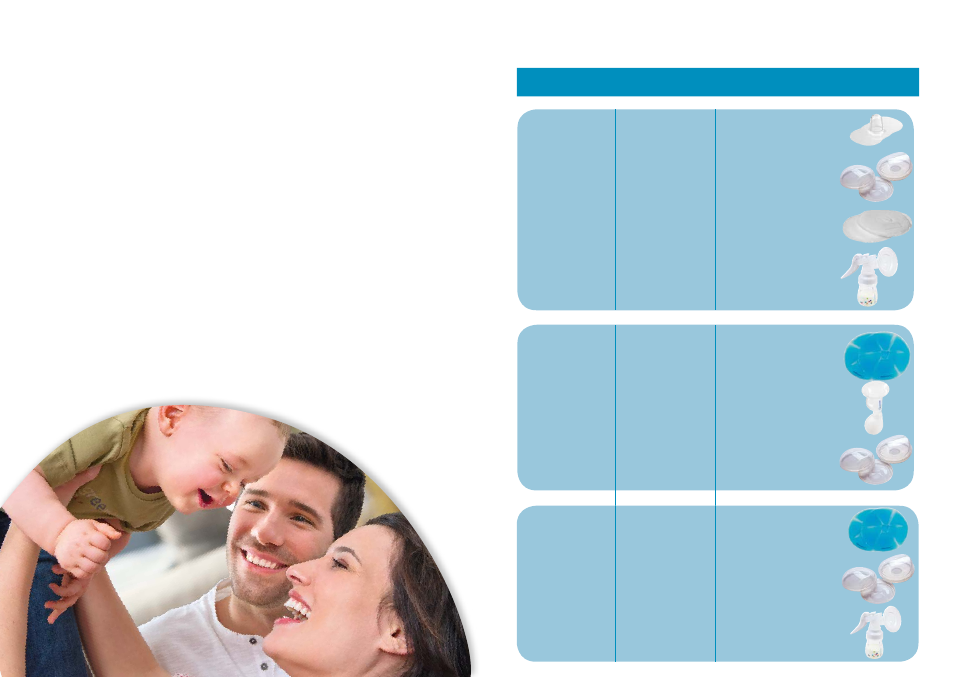Breastfeeding schedule, Answers to the ups and downs of breastfeeding, How to know – Bebe Confort Breastfeeding User Manual
Page 4: Breastfeeding, How long, Baby is hungry, Frequency, On each side

6
7
How to know
baby is hungry?
Some signs can warn you when baby is hungry. Try breastfeeding before baby cries.
•
baby’s head leans on the side
•
baby is looking for your breast
•
baby sucks his fingers
•
baby rolls his eyes
•
baby’s fists are clenched
Breastfeeding
schedule?
Experts recommend to breastfeed on demand without restricting the amount of time or length you breast-
feed. However, you can adjust the amount of time you breastfeed according to your personal schedule.
Breastfeeding
frequency
Breastfeeding frequency is different for each baby. During the first few weeks, a baby is breastfed approxi-
mately every 2 to 3 hours so 8 to 12 times a day. Feed baby as soon as he is hungry to stimulate milk supply
and for optimal breastfeeding.
How long
on each side?
Feed baby with one breast until baby stops swallowing, even after massaging your breast. Change sides if
baby wants. Breastfeeding with one breast is feasible if your baby is satisfied. Let him decide when he had
enough: baby will fall asleep. The approximate length of each feeding is around 15 to 30 minutes.
Answers to
the ups and downs of
breastfeeding
Common
issues
Advice
Products that can help
Inflamed
or painful nipples
Possible causes:
• wrong positioning
• breastfeeding occurs
too often
To prevent or heal, make sure
to let the last drops of milk
on your breast dry: it will heal
inflammations and cracks
efficiently.
Check with your doctor for
advice if your nipples are:
• chapped
• inflamed
• cracked
• bleeding
If it gets painful while breastfeeding,
use nipple shields as to protect
your sore nipples. Soft and flexible,
they still keep skin-to-skin contact
between your baby and you.
When you are not breastfeeding you
can use milk shells to heal naturally
and avoid painful rubbing.
Use pads that will absorb the liquid
while keeping your nipple dry and
change them after each feeding to
avoid infections. Disposable pads by
Bébé Confort are very absorbent
and allow a better airflow to keep
you dry.
If it really hurts, use a breast pump:
you’ll be able to pump your milk
and start the healing process at the
same time.
Congestion
Your breasts are
hard, painful and
warm
Possible causes:
• Inefficient
breastfeeding or too
spaced in time
• Wrong positioning of
mom or baby
• Blocked ducts
Breastfeed your baby as
often as possible; use a hot
washcloth before breastfee-
ding to soften your breasts
and to release some milk. It
will help your baby find your
breast.
Congestion can cause
breasts infection. Contact
your midwife if the pain gets
stronger or if you have the
following symptoms:
• fever
• headache
• stiffness
• hot, red or painful area on
your breast
Warm up Bébé Confort’s soothing
compresses and put them on your
breast before breastfeeding to favor
milk ejection.
You can also use Bébé Confort’s
mini breast pump to release and
relieve rapidly your breasts.
In case of a low congestion, you can
use milk shells to increase milk
ejection.
Be careful, do not use milk shells in
case of a high congestion (when
the milk doesn’t come out anymore)
because milk shells stimulate milk
production and could worsen the
symptoms.
Lack of milk / milk
ejection
Lack of milk / milk
ejection
To favor the milk ejection re-
flex, apply a warm washcloth
on your breast and massage
before breastfeeding.
For the first few days, it is
normal that milk production
is smaller because baby
only needs a few colostrum
drops to be satisfied. Then,
breastfeed your baby more
often and it will stimulate milk
production that will be adap-
ted to your baby’s needs.
Warm up and use Bébé Confort’s
soothing compresses.
Milk shells collect the milk and
their massaging effect can help
stimulating milk production and milk
ejection.
If you can’t breastfeed very often,
you can use a breast pump to keep
a regular milk expression and stimu-
late milk production.
